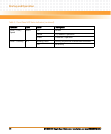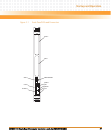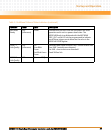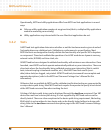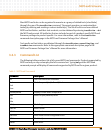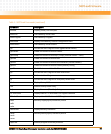
Chapter 3
MVME3100 Single Board Computer Installation and Use (6806800M28C)
41
MOTLoad Firmware
3.1 Overview
The MOTLoad firmware package serves as a board power-up and initialization package, as well
as a vehicle from which user applications can be booted. A secondary function of the MOTLoad
firmware is to serve in some respects as a test suite providing individual tests for certain
devices. This chapter includes a list of standard MOTLoad commands, the default VME and
firmware settings that are changeable by the user, remote start, and the alternate boot
procedure.
MOTLoad is controlled through an easy-to-use, UNIX-like, command line interface. The
MOTLoad software package is similar to many end-user applications designed for the
embedded market, such as the real time operating systems currently available.
Refer to the MOTLoad Firmware Package User’s Manual, listed in Appendix B, Related
Documentation, for more details.
3.2 Implementation and Memory Requirements
The implementation of MOTLoad and its memory requirements are product specific. The
MVME3100 Single Board Computer (SBC) is offered with a wide range of memory (for
example, DRAM, external cache, flash). Typically, the smallest amount of on-board DRAM that
an Emerson SBC has is 32 MB. Each supported product line has its own unique MOTLoad binary
image(s). Currently the largest MOTLoad compressed image is less than 1 MB in size.
3.3 MOTLoad Commands
MOTLoad supports two types of commands (applications): utilities and tests. Both types of
commands are invoked from the MOTLoad command line in a similar fashion. Beyond that,
MOTLoad utilities and MOTLoad tests are distinctly different.
3.3.1 Utilities
The definition of a MOTLoad utility application is very broad. Simply stated, it is considered a
MOTLoad command, if it is not a MOTLoad test. Typically, MOTLoad utility applications are
applications that aid the user in some way (that is, they do something useful). From the
perspective of MOTLoad, examples of utility applications are: configuration, data/status
displays, data manipulation, help routines, data/status monitors, etc.






